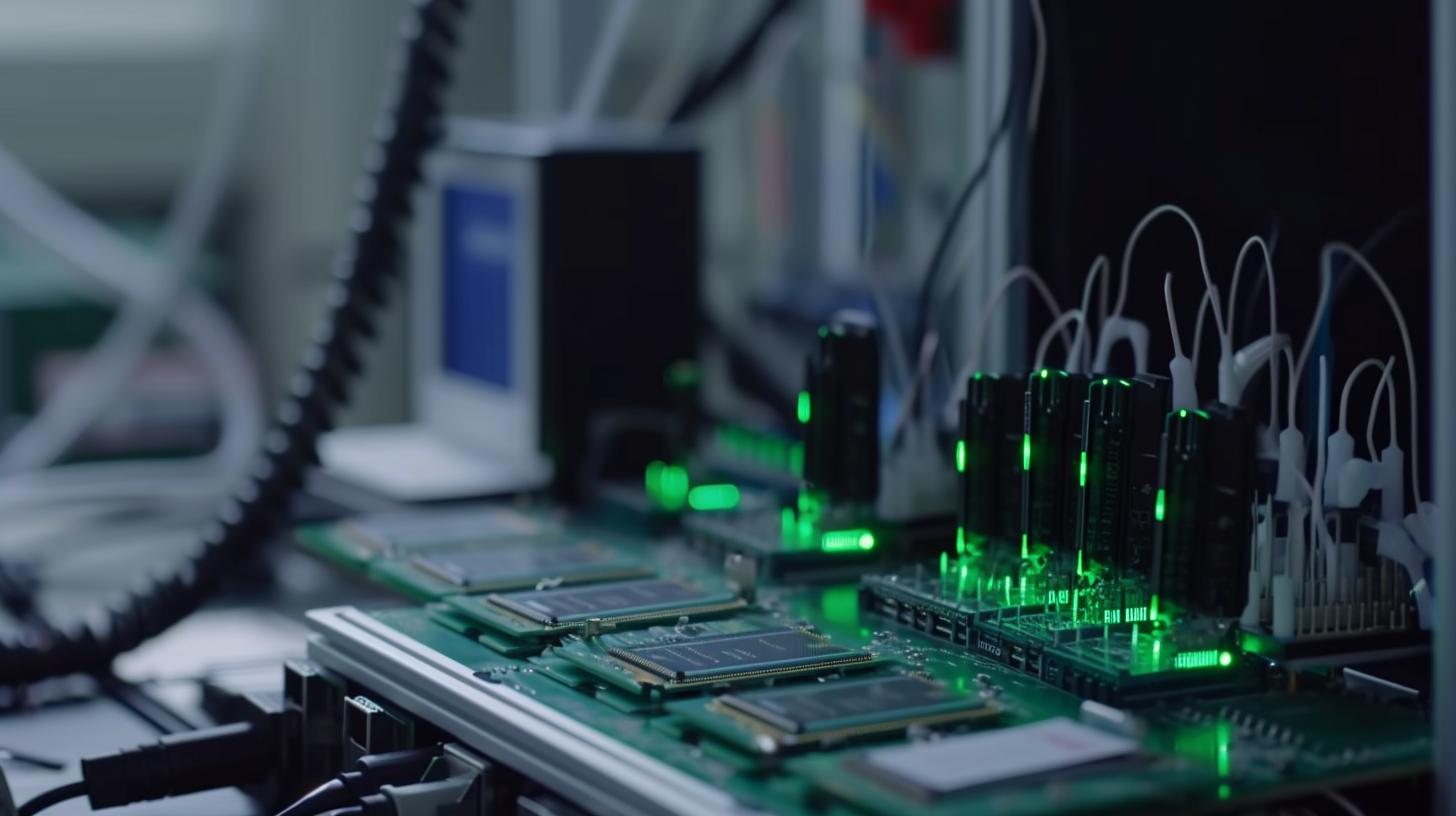
As technologies continue to advance, the need for efficient and reliable battery systems becomes increasingly important. One key aspect in ensuring the longevity and performance of batteries is the implementation of a battery health monitoring system. This crucial tool allows for the continuous assessment and evaluation of batteries, ultimately leading to improved energy efficiency, cost savings, and overall performance.
The battery health monitoring system plays a vital role in various industries, from automotive to renewable energy, where battery reliability is essential. By constantly monitoring the status and condition of batteries, potential issues can be identified early on, preventing costly damages and downtime. Through the use of advanced technology, these systems provide valuable insights into the health and performance of batteries, allowing for proactive maintenance and management.
In this article, we will delve into the importance of monitoring battery health and how a battery health monitoring system works. We will also explore the benefits that come with implementing such a system, as well as the factors to consider when choosing one for specific applications. Additionally, real-life case studies will be presented to showcase successful implementations of battery health monitoring systems across different industries.
Lastly, we will discuss the future outlook of these systems and their impact on energy efficiency and cost savings. Stay tuned as we uncover how battery health monitoring systems are revolutionizing the way we manage and maintain batteries in various applications.
Importance of Monitoring Battery Health
The importance of monitoring battery health cannot be overstated, especially in industries where the reliable performance of battery systems is critical. A battery health monitoring system plays a crucial role in ensuring the longevity and optimal functioning of batteries, thereby minimizing the risk of unexpected failures and downtime. Below are some key reasons why monitoring battery health is imperative:
- Preventive Maintenance: By continuously monitoring the status of batteries, potential issues can be identified early on, allowing for proactive maintenance to be performed before a major problem arises.
- Optimizing Performance: Understanding the health of batteries enables businesses to optimize their usage and charging patterns, ultimately leading to improved efficiency and longer lifespan of the batteries.
- Safety and Reliability: Monitoring battery health helps in identifying any anomalies or malfunctions that could pose safety risks. It also ensures the reliability of backup power systems when they are needed most.
In addition to these reasons, regulatory compliance may also mandate the monitoring of battery health in certain industries to ensure that safety standards are met. Therefore, implementing a comprehensive battery health monitoring system is not only beneficial but often necessary.
Furthermore, as advancements in technology continue to revolutionize various industries, the demand for more efficient and sustainable energy storage solutions grows. This underscores the significance of battery health monitoring systems in enabling businesses to meet modern energy demands while reducing operational costs and environmental impact. With these factors in mind, it becomes evident that prioritizing battery health monitoring is essential for any organization relying on battery systems for their operations.
How a Battery Health Monitoring System Works
A battery health monitoring system works by continuously monitoring the performance and condition of a battery to ensure its optimal functionality. The system utilizes various sensors and software to collect data on factors such as temperature, voltage, and current. This data is then analyzed to assess the overall health and condition of the battery.
There are several key components that make up a battery health monitoring system, including:
- Sensors: These devices are used to measure important parameters such as voltage, current, and temperature.
- Data Acquisition System: This system collects the data from the sensors and transfers it to a central processing unit for analysis.
- Central Processing Unit (CPU): The CPU analyzes the data collected from the sensors to determine the overall health and condition of the battery.
- Software: Specialized software is used to interpret and visualize the data collected, providing insights into the performance of the battery.
The real-time data collected by a battery health monitoring system allows for proactive maintenance and early detection of potential issues. For example, if a battery’s temperature exceeds safe levels or if there is an abnormal voltage fluctuation, the system can alert operators or automatically initiate corrective actions to prevent further damage or failure. This proactive approach can ultimately extend the lifespan of batteries and improve overall reliability.
Additionally, a battery health monitoring system can also provide historical data on battery performance, which can be invaluable for trend analysis and predictive maintenance planning. By understanding how batteries degrade over time, organizations can better plan for replacements or upgrades, leading to cost savings and improved operational efficiency in various industries such as telecommunications, automotive, renewable energy systems among others.
Benefits of Implementing a Battery Health Monitoring System
Increased Battery Life
Implementing a battery health monitoring system can significantly increase the lifespan of batteries. By continuously monitoring the health and performance of the batteries, potential issues can be identified early, allowing for timely maintenance or replacement. This proactive approach can help prevent unexpected downtime due to battery failure and ultimately extend the overall life of the batteries.
Reduced Maintenance Costs
One of the key benefits of implementing a battery health monitoring system is the reduction in maintenance costs. With real-time data on the condition of the batteries, maintenance activities can be planned and executed more efficiently. This not only minimizes unplanned downtime but also reduces the need for frequent and unnecessary maintenance, resulting in cost savings for organizations.
Enhanced Safety
Battery health monitoring systems contribute to enhanced safety by providing early warnings of potential battery issues. By continuously monitoring factors such as temperature, voltage, and overall performance, any anomalies or deviations from normal parameters can be detected promptly. This allows for preventive measures to be taken to avoid safety risks associated with battery malfunctions or failures.

Overall, implementing a battery health monitoring system offers numerous benefits including increased battery life, reduced maintenance costs, and enhanced safety. Organizations across various industries are increasingly recognizing the value of these systems in improving energy efficiency and cost savings while ensuring reliable power supply for critical operations. As technology continues to advance, so too will the capabilities of battery health monitoring systems in optimizing battery performance and contributing to sustainable energy management practices.
Factors to Consider When Choosing a Battery Health Monitoring System
Choosing the right battery health monitoring system is crucial for effectively managing the performance and longevity of batteries in various applications. There are several key factors to consider when selecting a battery health monitoring system, which can impact its functionality, compatibility, and overall effectiveness.
Compatibility and Integration
One of the most important factors to consider when choosing a battery health monitoring system is its compatibility with the existing battery technology and management systems. The selected system should seamlessly integrate with the specific type of batteries being used and other monitoring or control systems in place. It should also be able to communicate and share data effectively with other equipment in order to provide comprehensive insights into battery health.
Data Accuracy and Analysis Capabilities
The accuracy of data collection and analysis capabilities of a battery health monitoring system is essential for making informed decisions about maintenance, replacement, or optimization of battery performance. The system should be capable of capturing real-time data on key performance indicators such as charge/discharge cycles, temperature, voltage levels, and internal resistance. It should also have robust analytical capabilities to interpret this data and provide actionable insights into the overall health of the batteries.
Scalability and Customization
When selecting a battery health monitoring system, it is important to consider its scalability and customization options to accommodate future expansion or changes in battery systems. The chosen system should be scalable to support additional batteries or new technology integrations as needed. Furthermore, it should offer customization options that allow users to tailor monitoring parameters and alerts based on specific application requirements.
Considering these factors when choosing a battery health monitoring system can help organizations make informed decisions that maximize the benefits of implementing such systems while ensuring effective management of their battery assets.
Case Studies
In recent years, many industries and sectors have embraced the use of battery health monitoring systems to optimize their operations. One such case study is the implementation of these systems in the telecommunications industry.

With a vast network of cell towers and base stations that rely on backup power from batteries, it is crucial to ensure that these power sources are functioning at their optimal capacity. By utilizing battery health monitoring systems, telecommunications companies have been able to accurately track the performance and condition of their batteries, leading to significant cost savings and improved reliability.
Another successful case study revolves around the deployment of battery health monitoring systems in data center facilities. These centers are known for their high energy consumption and reliance on uninterrupted power supply.
With the implementation of a comprehensive battery health monitoring system, data centers can closely monitor the condition and performance of their backup batteries, thereby reducing downtime and maintenance costs. This proactive approach has proven to be invaluable in ensuring continuous operations and preventing costly disruptions due to battery failures.
Furthermore, the transportation industry has also seen notable success with battery health monitoring systems. Electric vehicles (EVs) and hybrid vehicles rely heavily on their battery packs for propulsion. By implementing sophisticated monitoring systems, automotive manufacturers and fleet operators can closely monitor the health and behavior of these batteries, allowing for predictive maintenance to minimize unexpected failures and extend battery life. This strategic approach not only enhances vehicle reliability but also contributes to sustainable transportation practices.
| Industry | Benefits |
|---|---|
| Telecommunications | Significant cost savings and improved reliability |
| Data Centers | Reduced downtime and maintenance costs |
| Transportation | Predictive maintenance and extended battery life |
The Future of Battery Health Monitoring Systems
One significant development in the future of battery health monitoring systems is the integration of artificial intelligence (AI) and machine learning algorithms. These technologies can analyze vast amounts of data collected from the batteries in real-time, allowing for predictive maintenance and early detection of potential issues. This proactive approach can help prevent costly downtime and prolong the lifespan of batteries, resulting in substantial savings for businesses and industries that rely on battery-powered equipment.
Moreover, with the growing focus on sustainability and environmental impact, there is an ongoing effort to make battery health monitoring systems more eco-friendly. Research and development are underway to create monitoring devices that utilize sustainable materials, energy-efficient components, and recyclable parts.
This push towards eco-conscious designs aligns with the global initiative to reduce carbon footprints and minimize electronic waste. As a result, it not only benefits the environment but also contributes to a more socially responsible approach to technology.
Furthermore, another exciting aspect of the future of battery health monitoring systems is their potential integration with smart grid solutions. By connecting these monitoring systems to smart grids, it becomes possible to optimize energy distribution based on real-time data insights from battery health. This synergy could lead to more efficient use of energy resources, reduced reliance on non-renewable sources, and overall improved grid reliability.
| Advancement | Impact |
|---|---|
| Integration of AI/ML algorithms | Predictive maintenance & cost savings |
| Eco-friendly designs | Sustainability & environmental impact |
| Integration with smart grids | Efficient energy distribution & grid reliability |
Conclusion
In conclusion, the implementation of a battery health monitoring system has shown tremendous potential in improving energy efficiency and cost savings for various industries. By proactively monitoring the health of batteries, organizations can avoid unexpected downtime, optimize maintenance schedules, and extend the lifespan of their battery systems. This not only reduces operational costs but also contributes to a more sustainable and environmentally friendly approach to energy management.
One of the key advantages of a battery health monitoring system is its ability to provide real-time data on the performance of batteries, allowing for timely interventions and replacements when necessary. This proactive approach minimizes the risk of equipment failure and prevents costly disruptions to operations. Additionally, by maximizing the useable life of batteries, organizations can reduce their overall environmental impact by minimizing waste and increasing resource efficiency.
Looking ahead, the future of battery health monitoring systems appears promising as advancements in technology continue to improve their capabilities. With the integration of predictive analytics, machine learning, and Internet of Things (IoT) connectivity, these systems are expected to become even more sophisticated in predicting battery degradation and optimizing performance. As a result, businesses can expect further improvements in energy efficiency and cost savings through the adoption of advanced battery health monitoring technologies.






